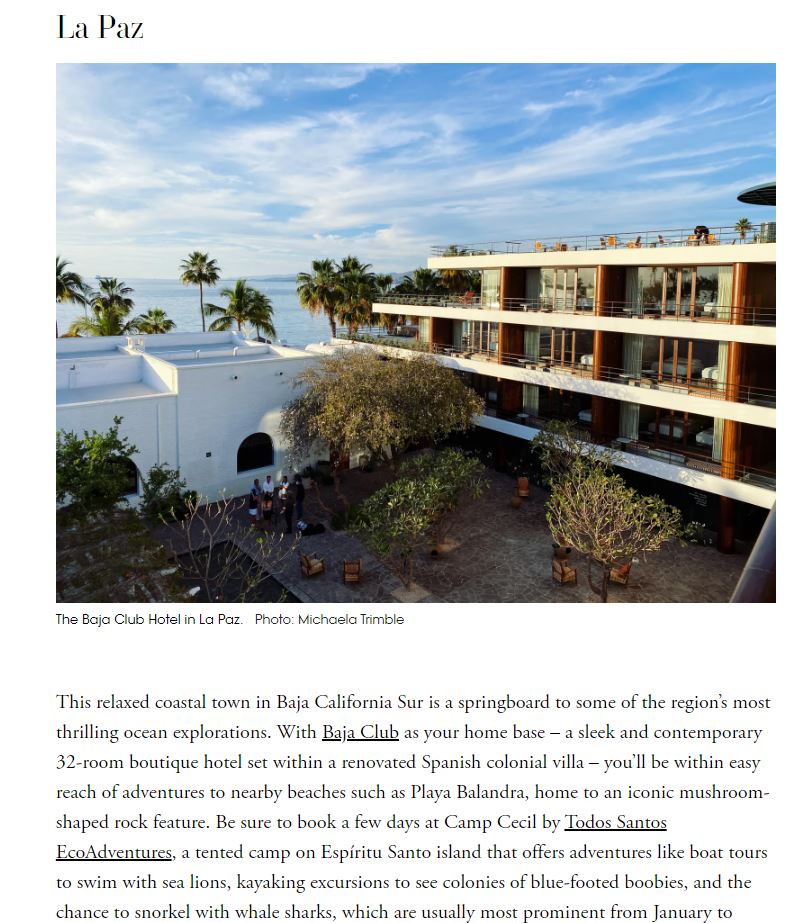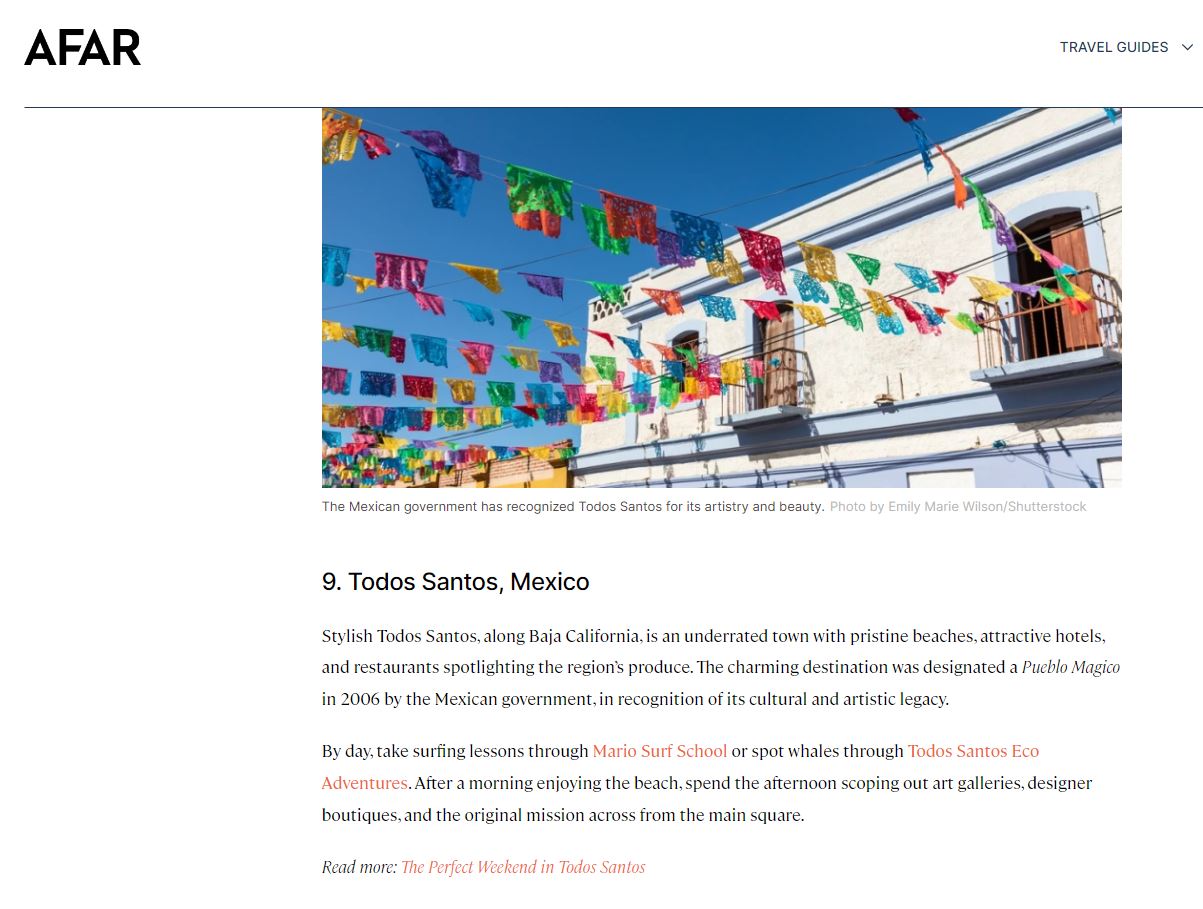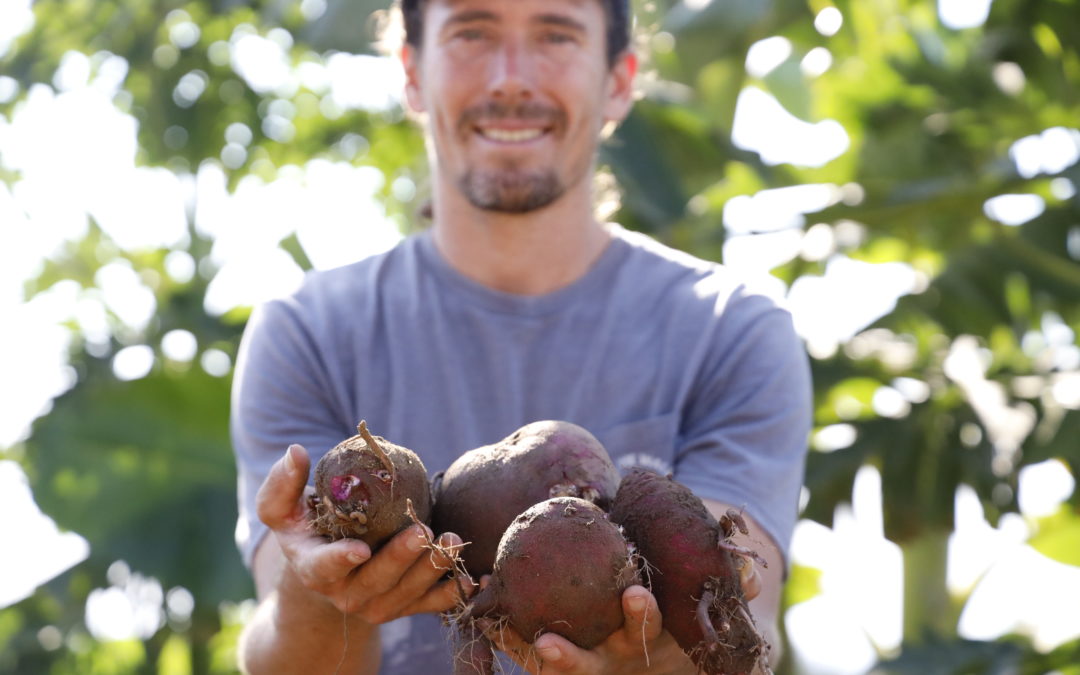
Reclaiming the Soil: Regenerative Farming in Baja California Sur
Reclaiming the Soil: Regenerative Farming in Baja California Sur
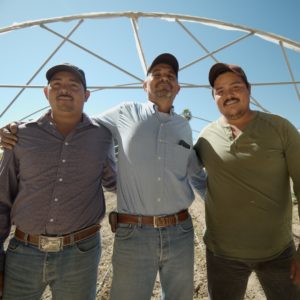 50-year old Felipe Fisher is a successful Baja California Sur farmer who still works the 1.5 hectare-ranch in San Jose Viejo that his great grandparents established in 1901. He started working with his father on the ranch when he was 15 and they, together with the 132 farmers that comprise Productores Organicos del Cabo cooperative, have built a successful business exporting organic basil and cherry tomatoes to places as far-flung as Singapore, Japan, the United States and United Arab Emirates. “But it’s not just the organic farmers who are exporting,” explains Felipe about a startling Baja reality, “Most of the fruit and vegetables that you buy in Costco, WalMart and the large grocery chains in Baja Sur actually come from Sinaloa or other parts of Mexico.”
50-year old Felipe Fisher is a successful Baja California Sur farmer who still works the 1.5 hectare-ranch in San Jose Viejo that his great grandparents established in 1901. He started working with his father on the ranch when he was 15 and they, together with the 132 farmers that comprise Productores Organicos del Cabo cooperative, have built a successful business exporting organic basil and cherry tomatoes to places as far-flung as Singapore, Japan, the United States and United Arab Emirates. “But it’s not just the organic farmers who are exporting,” explains Felipe about a startling Baja reality, “Most of the fruit and vegetables that you buy in Costco, WalMart and the large grocery chains in Baja Sur actually come from Sinaloa or other parts of Mexico.”
This head-spinning fact caught the attention of Alianza Para la Seguridad Alimentaria (ASA) when it conducted an assessment of agriculture and the local food system during the pandemic. Conducted in collaboration with the International Community Foundation, the survey confirmed what Felipe and the rest of the Baja Sur farming community long knew to be true: almost all of the fruit and vegetables grown in Baja California Sur are exported, and almost all the produce we buy locally in Baja Sur is imported from Guadalajara, Tijuana and Sinaloa.
“Why is the global food system the way it is?” queries Kelsey Bearden, ASA’s Coordinator for Agroecology and Local Economy. “At one point it made economic sense to grow things here and ship them elsewhere, but the pandemic demonstrated in harsh terms that these distribution and supply chains are not as stable as was once thought. In fact, our assessment showed that Baja is extremely vulnerable from a food security perspective. We find ourselves with a rapidly growing population right when our food supply system is being vastly disrupted.”
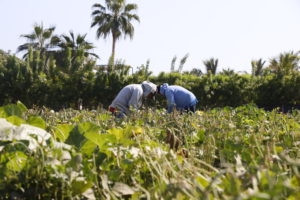 Kelsey and her team are making haste slowly to diffuse this ticking timebomb. Their goal is to facilitate changes in the way farming has been done in Baja Sur since the 1950s, to realign a system that is reliant not only on exports, but also on imported chemicals for soil productivity. To foster change, they are building a network of support for farmers who are interested both in selling locally and improving the health of their soil to obviate the need for agrochemicals. A pilot project was conducted in La Paz municipality in 2021-2022 which revealed that not only is there a lot of interest from the farmers, but also from those whom they serve including food distributors and chefs. They are encouraged, but there are challenges.
Kelsey and her team are making haste slowly to diffuse this ticking timebomb. Their goal is to facilitate changes in the way farming has been done in Baja Sur since the 1950s, to realign a system that is reliant not only on exports, but also on imported chemicals for soil productivity. To foster change, they are building a network of support for farmers who are interested both in selling locally and improving the health of their soil to obviate the need for agrochemicals. A pilot project was conducted in La Paz municipality in 2021-2022 which revealed that not only is there a lot of interest from the farmers, but also from those whom they serve including food distributors and chefs. They are encouraged, but there are challenges.
“Baja land is as bad as it gets anywhere” observes Jan Federico William Loeffler Bird, a Mexican-American regenerative farming expert who was born and raised on the Baja peninsula, and is part of ASA’s support network for local farmers seeking change. “So much of the land here has been stripped of all nutrients by full-on chemical, industrial, monoculture farming. Our local soil needs to be rebuilt, regenerated to regain fertility. Soil fertility is the critical foundation of everything: water, biodiversity, community health and well-being.”
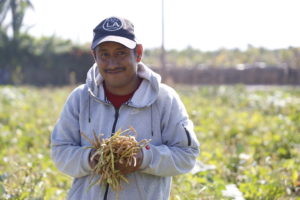 Jan recently completed a two-year regenerative farming pilot project on 4,000 square meters of land in Pescadero. One measure of soil fertility is the percentage of organic matter that it contains, and most of the world’s productive agricultural soils have between 3% and 6% organic matter. When the level is below 3% it is much more difficult to have good yields without using fertilizers and pesticides. Farming regeneratively for just two years between February 2020 and July 2022, Jan and his team were able to double the organic matter in the soil from 0.74% to 1.48%, a dramatic improvement. And since 50% of soil organic matter is organic carbon, it turns out that by improving the soil quality Jan’s project also sequestered 18.33 metric tons of CO2, “which is the emissions equivalent of burning 2,062 gallons of gasoline” he notes.
Jan recently completed a two-year regenerative farming pilot project on 4,000 square meters of land in Pescadero. One measure of soil fertility is the percentage of organic matter that it contains, and most of the world’s productive agricultural soils have between 3% and 6% organic matter. When the level is below 3% it is much more difficult to have good yields without using fertilizers and pesticides. Farming regeneratively for just two years between February 2020 and July 2022, Jan and his team were able to double the organic matter in the soil from 0.74% to 1.48%, a dramatic improvement. And since 50% of soil organic matter is organic carbon, it turns out that by improving the soil quality Jan’s project also sequestered 18.33 metric tons of CO2, “which is the emissions equivalent of burning 2,062 gallons of gasoline” he notes.
Community health is a key goal in regenerative farming. Dr. Andrei Aguilar is a pathologist who sees a lot of cancer among community members in Baja Sur, much of which he believes is closely tied to the widespread use of agrochemicals throughout Mexico. He wants to stop that cycle in Baja. “Here in Baja we really need to be a part of producing what we are eating” says Andrei. Andrei always loved the ranch owned and operated by his grandfather, then father, and now owns 10 hectares of it near the airport of La Paz. He and his wife Gabriela Huerta have fully embraced the regenerative farming techniques taught by Jan and other members of the ASA network. Says Gabriela, “It is amazing that we cannot find good quality, chemical-free produce in a place like La Paz. Our vision for our family and friends is a wholly self-sufficient ranch where we can grow our own food.”
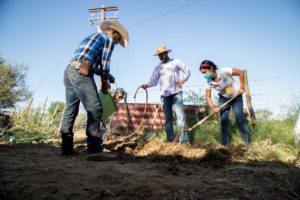 Revitalizing soil comes down to mimicking nature’s processes. “When left to its own devices, nature always covers soil with living plants to generate soil health” says Jan. Andrei and Gabriela, like Jan, therefore started their project with “cover crops” like sunflowers, mesquite trees and fruit-bearing trees like guayabas, bananas, and figs. (Jan also includes corn, sorghum, oats, mustard, mung beans and more). Cover crops, which are dispersed among cash crops, “contribute to soil fertility by improving soil structure with their root systems, recycling nutrients, and accumulating organic matter” says Jan. Just a few months after their cover crops were in place Andrei and Gabriela introduced other crops including lettuce, cucumbers, pumpkins and many others. A large variety of plant species helps defend against pests and diseases while improving the soil structure, which in turn improves the soil’s ability to retain water.
Revitalizing soil comes down to mimicking nature’s processes. “When left to its own devices, nature always covers soil with living plants to generate soil health” says Jan. Andrei and Gabriela, like Jan, therefore started their project with “cover crops” like sunflowers, mesquite trees and fruit-bearing trees like guayabas, bananas, and figs. (Jan also includes corn, sorghum, oats, mustard, mung beans and more). Cover crops, which are dispersed among cash crops, “contribute to soil fertility by improving soil structure with their root systems, recycling nutrients, and accumulating organic matter” says Jan. Just a few months after their cover crops were in place Andrei and Gabriela introduced other crops including lettuce, cucumbers, pumpkins and many others. A large variety of plant species helps defend against pests and diseases while improving the soil structure, which in turn improves the soil’s ability to retain water.
“The magic appears at the end when you have a pumpkin with no chemicals,” says Gabriela. “It appears when your cucumbers this year are so much better than the year before. But you have to have a vision and you have to be patient. You have to know that your goal is to be producing healthy, chemical-free food for your family and community and that it may take 2-3 years to get there. What we’re doing with Jan and the ASA is revolutionary for Baja.”
Revolutionary? Definitely. But is it profitable? “Yes, on many levels” states Jan. “The economics of regenerative farming are clear and compelling. You have greater output based on fewer inputs. Regenerative agriculture is roughly 2 to 4 times more productive than traditional agriculture, meaning that much more food can be grown per acre, and at a lower cost.” Forbes magazine agrees. In a January 2020 article, Forbes cited the results of a Ecdysis Foundation study on how regenerative systems affect yields, pests and profitability. “…farms with regenerative practices were 78% more profitable than conventional plots. This increase in profitability was the result of two main factors: input costs and end markets [as] regenerative farmers received higher premiums for their crops….But the benefits go beyond fertilizer costs. Increasing soil organic matter also increased the diversity of insects found in the soil. Insect diversity has been shown to decrease harmful pest abundance… leading to stronger crops.” Kelsey of ASA also points out that foregoing agrochemicals takes out the huge fossil fuel expenditures associated with mining, manufacturing and transporting the chemicals.
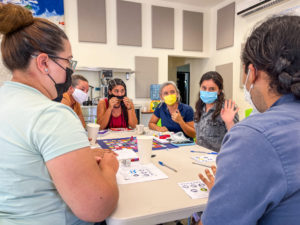 Kelsey outlines some of the challenges ahead, “It’s not just about the farmers and growing the food, it’s about where the food is going, how it gets there and how it’s prepared once it gets there. We are working hard to understand the local food system, who moves the food around, what consumer requirements are and what is the capacity of the local farmers to meet local demand.”
Kelsey outlines some of the challenges ahead, “It’s not just about the farmers and growing the food, it’s about where the food is going, how it gets there and how it’s prepared once it gets there. We are working hard to understand the local food system, who moves the food around, what consumer requirements are and what is the capacity of the local farmers to meet local demand.”
One of ASA’s goals is to generate and facilitate shorter and more equitable supply chains to connect local food to local buyers. ASA is exploring different models for the region, including more direct sales between farmers and buyers interested in local and regeneratively produced food, as well as models that strengthen the logistics of regional sales and distribution.
Ross Vail and his sons Logan and Diego are the owners and operators of Sueño Tropical, the first and largest organic producer in Baja Sur. Their deep experience and knowledge base is another strong link in the ASA farmer support network. “We’ve been working on a food hub concept with ASA over the last two years” notes Logan. “Here at Sueño Tropical we have the set up to pack, process, store and distribute under OSHA standards the products of local farmers using regenerative techniques.” Ross adds, “Our goal is to have enough local, regeneratively-farmed products to meet the demand of all the hotels, restaurants and grocery stores of Baja Sur so that we are truly a local farm to table economy. This will take quite an effort to achieve, but it’s a challenge we embrace.”
Felipe Fisher is totally onboard with the goals of the ASA. “While we built our business on exports, we would rather be producing and selling locally, and providing healthier produce for the people of Baja Sur. There are already several local high-end stores and restaurants interested in our products.”
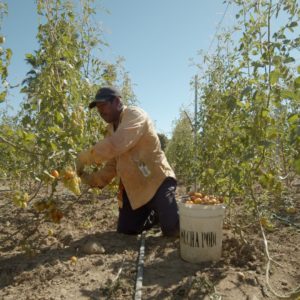 “I am so proud and happy about what we achieved in Pescadero” adds Jan. “Of course, there is still so much to do, but I’m super excited about this next phase. I’m building out bigger farms and expanding my regenerative farming operation to feed more of the local community.”
“I am so proud and happy about what we achieved in Pescadero” adds Jan. “Of course, there is still so much to do, but I’m super excited about this next phase. I’m building out bigger farms and expanding my regenerative farming operation to feed more of the local community.”
The change in outlook and attitude is already taking root with the next generation. Andrei and Gabriela’s daughters, now 3 and 6 years old, both fervently want to be agronomists when they grow up. Andrei and Gabriela will just be happy if their children can live in a Baja Sur community where locally grown, chemical-free produce is the norm, not the exception.
If you would like more information on how to get involved with the ASA as a farmer, buyer, or other interested party, please email the organization at or contact them via WhatsApp a +52-624-125-3283. Be a part of the change!


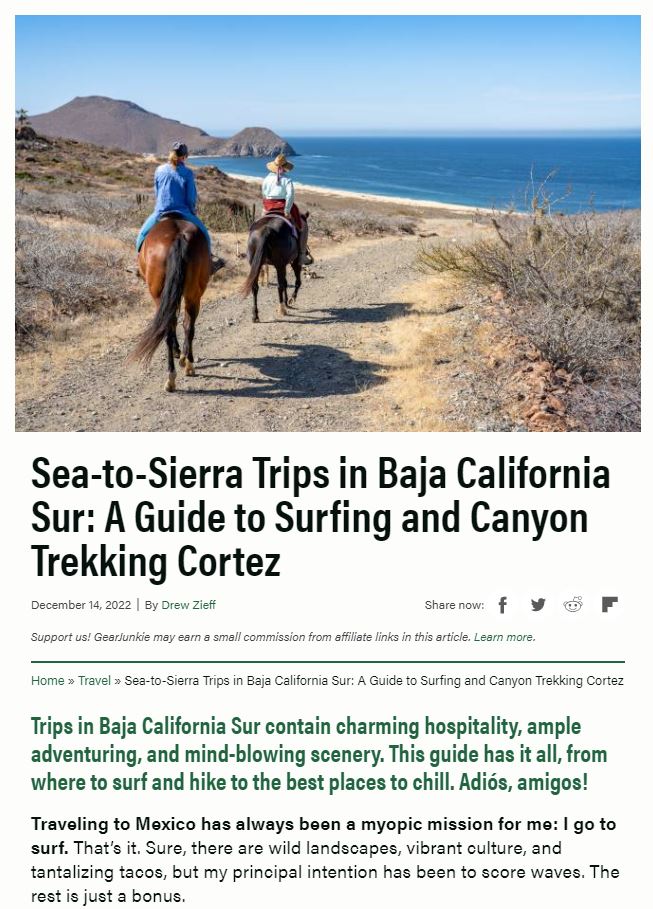
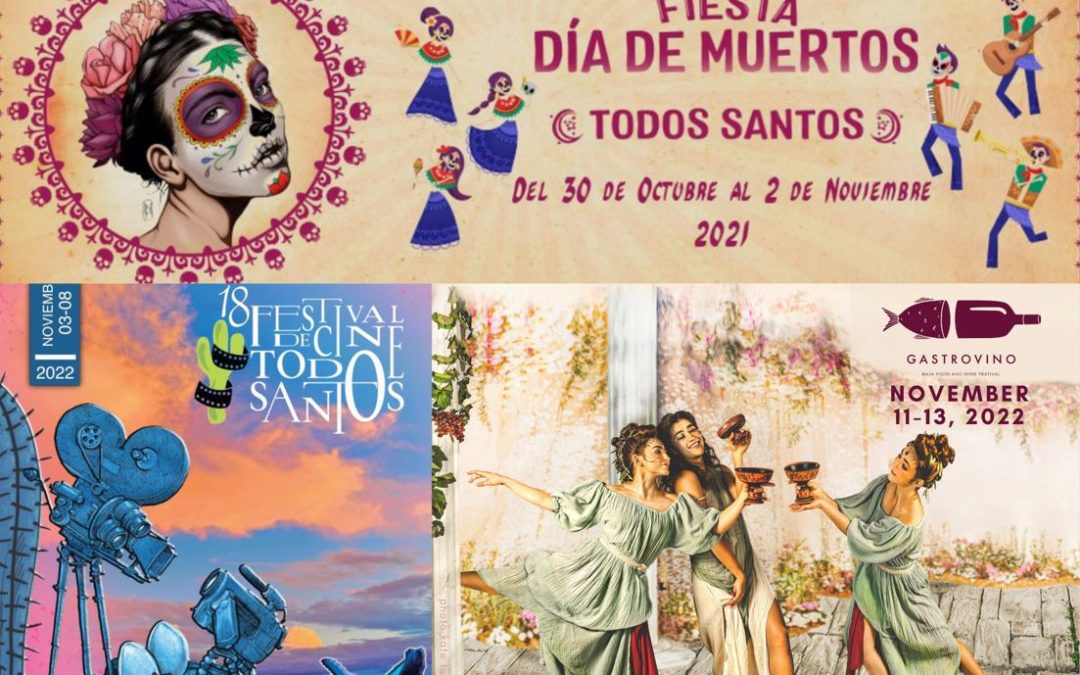
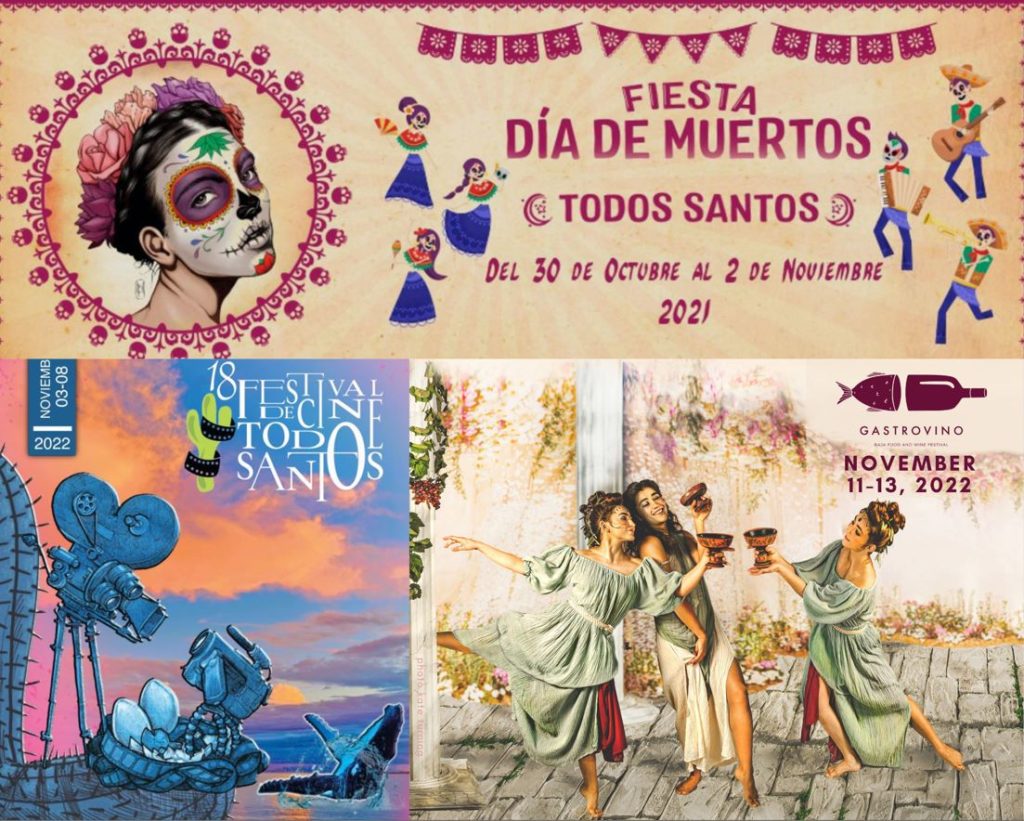
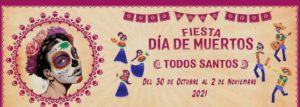
 Sylvia Perel and the Todos Santos Film Festival.
Sylvia Perel and the Todos Santos Film Festival.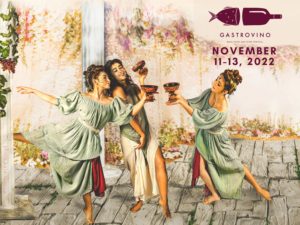 Perla Garnica and the GastroVino Baja Food and Wine Festival.
Perla Garnica and the GastroVino Baja Food and Wine Festival.
